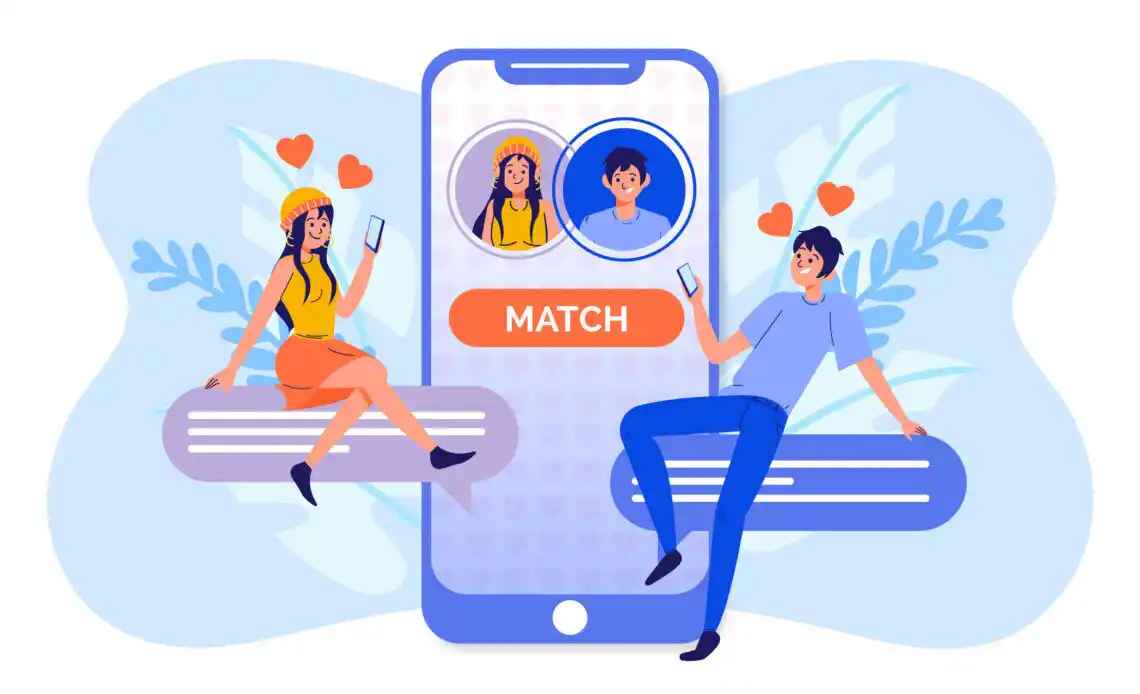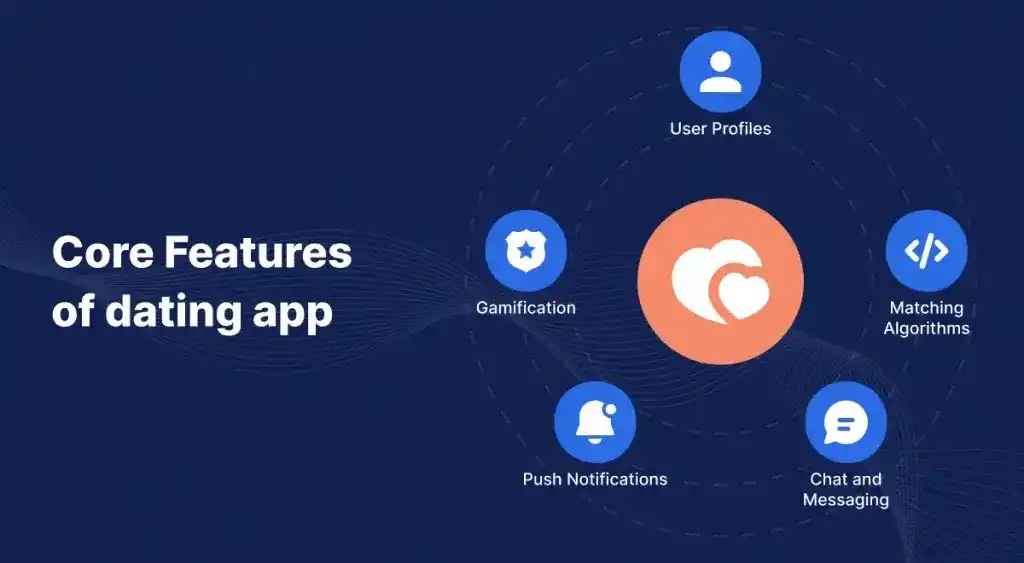Top Dating Apps in India – A Technical Overview 2025
Updated on : 04 April, 2025

Image Source: google.com
Table Of Contents
Introduction
In 2025, dating apps in India are no longer just social tools—they’re sophisticated platforms built with robust technologies and optimized for user engagement at scale. With cloud-native infrastructure, AI-driven matching algorithms, and secure authentication systems, these apps are reshaping how relationships begin in the digital age.
Rise of Dating Apps in India
-
Cloud-based scalability (AWS, GCP): Enables dating apps to handle millions of users with real-time performance and minimal downtime.
-
Microservices architecture: Ensures modular development, making the platform more resilient, flexible, and easier to scale.
-
AI/ML algorithms: Analyze user behavior and preferences to deliver highly personalized and relevant match suggestions.
-
Localization using NLP: Adapts content, language, and interface to regional cultures and dialects for better user engagement.
Experience seamless cloud integration through AWS with Hexadecimal.
Changing User Behavior & Digital Relationships
| Best Practice | Description |
|---|---|
| Behavioral Analytics | Platforms track metrics like dwell time, swipe frequency, and message response rates to refine recommendation algorithms. |
| A/B Testing | Ongoing experiments with UI layouts, match prompts, and push notifications help maximize user engagement and retention. |
| Real-Time Communication | Technologies like WebSockets and Firebase enable seamless live chats, status updates, and instant interactions. |
| Privacy & Security Enhancements | Apps adopt end-to-end encryption, OAuth 2.0, and multi-factor authentication to safeguard user data and privacy. |
Market Landscape
Dating App Usage Statistics in India
-
India witnessed a 25% YoY increase in dating app downloads (2024–2025), with over 70 million active users engaging monthly.
-
Average session time per user is ~9–12 minutes, tracked via in-app analytics and engagement monitoring tools.
-
Apps use real-time dashboards (e.g., Mixpanel, Firebase Analytics) to monitor key KPIs like churn rate, match conversions, and active user retention.
Growth Drivers:
| Growth Driver | Technical Description |
|---|---|
| Smartphone Penetration | Affordable smartphones and 4G/5G networks boost accessibility, enabling device-level caching and offline-first capabilities for smoother app performance. |
| Urbanization | Urban migration supports hyperlocal matchmaking using location-aware features like geofencing APIs and reverse geocoding. |
| Gen Z Adoption | Gen Z favors immersive, mobile-first interfaces powered by gesture-based UI, short-form video, and gamification via React Native or Flutter. |

Looking to enhance user experience with expert UI/UX design?
Top Dating Apps in India (2025)
Tinder
-
Core Technology: Built with scalable microservices architecture and cloud infrastructure (primarily AWS).
-
Key Features: Swipe-based matching, Boost & Super Likes, in-app purchases, and Explore tab for discovery.
-
AI Integration: Uses machine learning to prioritize profiles based on swipe behavior and engagement patterns.
-
Real-Time Features: WebSocket-based chat and video features enable seamless interaction.
-
User Base: Dominates urban metros; strong Gen Z and millennial engagement.
Bumble
-
Core Technology: React Native-based frontend with Firebase and RESTful backend services.
-
Key Features: Women-first messaging, BFF and Bizz modes, video/voice calling, verified profiles.
-
Security Measures: Two-factor authentication, photo verification, and block/report tools.
-
Differentiator: Prioritizes safety and empowerment; strong presence in Tier 1 and Tier 2 cities.
QuackQuack
-
Core Technology: Lightweight Android-first app optimized for low-bandwidth environments.
-
Key Features: Region-based filters, detailed profile compatibility checks, and chat lock features.
-
Localization: Strong vernacular language support using NLP models for better regional engagement.
-
User Base: Popular in Tier 2/3 cities with high adoption among 25–35 age group.
Happn
-
Core Technology: Utilizes real-time location tracking via geolocation APIs and Bluetooth proximity detection.
-
Key Features: Matches based on real-world encounters, map-based UI, and in-app messaging.
-
Privacy Focus: Location data is not stored; it’s used transiently to trigger matches.
-
User Base: Preferred by users interested in spontaneous, nearby interactions.
Deliver seamless mobile experiences with Hexadecimal’s expert app development services.
Popularity by Users:
| Rank | App Name | Owner/Company | Launched In |
|---|---|---|---|
| 1 | Tinder | Match Group | 2012 |
| 2 | Bumble | Bumble Inc. (Backed by Blackstone) | 2014 |
| 3 | QuackQuack | QuackQuack App Pvt. Ltd. (India) | 2010 |
| 4 | Happn | Happn SAS (France) | 2014 |
Key Features That Drive Engagement

Image Source: Reverse Engineering Risk
Modern dating apps use smart technologies to boost user engagement:
-
Gamified Onboarding & Swipe Mechanics: Interactive UI with swipe gestures and game-like onboarding keeps users engaged from the start.
-
AI-Based Matchmaking: Machine learning algorithms analyze user behavior and preferences to deliver personalized match suggestions.
-
Real-Time Chat & Notifications: WebSockets and Firebase enable instant messaging and push alerts, ensuring continuous interaction.
-
Geolocation-Based Matching: GPS and geofencing APIs provide hyperlocal matches based on user proximity.
-
Privacy & Safety Protocols: Features like end-to-end encryption, 2FA, and AI-driven moderation protect user data and build trust.
Monetization Models in Dating Apps
| Monetization Model | Description |
|---|---|
| Freemium vs Subscription | Basic features are free; users can upgrade to paid plans for access to premium filters, unlimited swipes, and visibility enhancements. |
| In-App Purchases | Users can buy boosts, super likes, or read receipts to increase profile visibility and interaction without full subscriptions. |
| Ads & Partnerships | Apps display targeted ads to free users and partner with brands for integrated campaigns, generating affiliate and ad revenue. |
Tech Stack Behind Leading Dating Apps

Image Source: Reverse Engineering Risk
| Component | Technologies |
|---|---|
| Frontend | React Native, Flutter for cross-platform mobile apps |
| Backend | Node.js, Python, Firebase for real-time APIs |
| Database | MongoDB, PostgreSQL, Redis for fast data access |
| Deployment | AWS, Azure, GCP for scalable cloud hosting |
Frontend Frameworks:
- React Native and Flutter are the most popular choices for building cross-platform mobile apps.
- They offer responsive designs and faster development across iOS and Android from a single codebase.
Backend Technologies:
- Node.js and Python are commonly used to build scalable and efficient backend services.
- Firebase is also widely used for features like real-time messaging, authentication, and cloud functions.
Database & Caching:
- For data management, apps often rely on MongoDB and PostgreSQL—MongoDB for flexible schema handling and PostgreSQL for relational data.
- Redis is used for caching sessions and speeding up real-time interactions.
Deployment:
- Hosting and deployment are typically handled via cloud platforms like AWS, Azure, and Google Cloud.
- This offer's global infrastructure, load balancing, and scalable services to handle millions of users.
One team. Complete solution. Full-stack development with Hexadecimal.
Challenges in Building a Dating App
Building a dating app involves several technical and operational challenges:
User Verification & Fake Profiles:
- Preventing fake accounts is critical.
- Implementing multi-step verification (email, phone, photo) and using AI-based face detection or manual review processes are common solutions.
Real-Time Scalability:
- Supporting thousands or millions of concurrent users requires scalable backend infrastructure.
- Technologies like WebSockets, load balancing, and cloud-based autoscaling (e.g., AWS or GCP) are essential.
Ensuring User Privacy:
- Dating apps handle sensitive personal data.
- Ensuring security through end-to-end encryption, OAuth 2.0, and GDPR-compliant data policies is vital for user trust.
Moderation & Reporting Systems:
- To maintain a safe environment, apps need content moderation tools powered by AI (e.g., NLP for text/image review), as well as efficient user reporting and blocking mechanisms.
Challenges
| Challenge | Summary |
|---|---|
| User Verification | Prevent fake profiles using photo, phone, or AI checks. |
| Real-Time Scalability | Use cloud services and WebSockets to handle many users live. |
| User Privacy | Protect data with encryption and secure authentication. |
| Moderation | AI tools and user reports help flag harmful content. |

Ready to Scale Your Mobile App with AWS Cloud Expertise?
Future of Dating Apps in India
| Future Trend | Key Highlights |
|---|---|
| Wearables & Voice Assistants | Activity-based matching; hands-free navigation via voice commands |
| Metaverse Dating | Immersive virtual dates; avatar-based interactions in 3D environments |
| NLP & AI Conversations | Smart reply suggestions; sentiment analysis for better match quality |
1. Integration with Wearables & Voice Assistants
As wearable devices and voice technology become more widespread, dating apps are expected to integrate with them for smarter user interactions.
-
Activity-Based Matching: Apps could sync with fitness trackers and smartwatches to match users based on daily habits, like sleep patterns, step counts, or exercise routines — promoting healthier, lifestyle-aligned connections.
-
Voice-Enabled Interactions: Integration with Alexa, Siri, or Google Assistant will allow users to navigate apps, respond to messages, or get match suggestions using voice commands — adding convenience and accessibility.
2. Metaverse & Virtual Dating Experiences
The rise of virtual reality (VR) and augmented reality (AR) is set to transform how people connect and interact on dating platforms.
-
Immersive Virtual Dates: Users can meet in 3D virtual spaces (like virtual cafes or beaches) using headsets or AR-enabled devices, simulating real-life social interactions for long-distance or shy users.
-
Avatar-Based Engagement: Users can create customizable avatars to represent themselves in virtual events, games, or digital speed dating — enhancing comfort and creative expression.
3. NLP and AI for Smart Conversations
AI and Natural Language Processing (NLP) will play a major role in improving the quality of user communication and matchmaking.
-
Real-Time Conversation Suggestions: AI can recommend witty icebreakers, smart replies, or even emojis, helping users maintain engaging and natural conversations.
-
Behavior & Sentiment Analysis: NLP can evaluate message tone, personality traits, and emotional intent, allowing apps to refine matches and improve compatibility scoring.
Conclusion
Dating apps in India are growing fast with tech-driven features and diverse user needs. Startups can succeed by focusing on security, personalization, and regional or niche markets.
What Startups Can Learn
- Leading apps show the importance of smooth UI, scalable tech, and strong user safety.
- Startups should focus on real-time features, verification, and continuous UX testing.
Scope for Regional & Niche Platforms
- There’s growing demand for apps with regional language support and niche targeting (e.g., LGBTQ+, professionals, cultural groups), offering space for innovation and personalization.
FAQs
Q.1. What is the most used dating app in India?
A: Tinder remains the most popular dating app in India, followed by Bumble and QuackQuack.
Q.2. Are Indian dating apps safe to use?
A: Most apps offer safety features like profile verification, reporting systems, and encrypted chats. Always use trusted platforms and avoid sharing personal details too soon.
Q.3. Which dating app is best for serious relationships?
A: Bumble and Aisle are preferred for serious relationships, offering more detailed profiles and intent-based matching.
Q.4. Are there free Indian dating apps?
A: Yes, many apps like QuackQuack, TrulyMadly, and Tinder offer free versions with optional premium upgrades.
Q.5. Which dating app supports regional languages?
A: Apps like QuackQuack and Woo offer regional language support for users from Tier 2 and Tier 3 cities.
Q.6. Do dating apps in India work without paid subscriptions?
A: Yes, basic features like swiping and messaging often work without payment, though advanced features require subscriptions.


